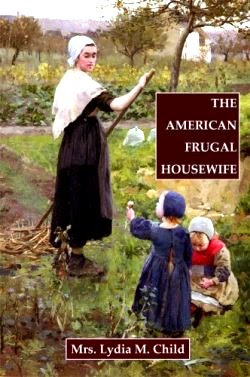 |
| Home canned split pea soup with a half sandwich made with home baked Walnut bread |
There are no active coronavirus cases here yet, but school
has been closed. We live in a small
county seat town, only 13,000 population.
We didn't need a lot...we both have well-stocked pantries; as my son said,
it's how we were raised. But seeing
higher prices and less stock made me think about being more thrifty and stretching out our supplies.
When my husband and I lived in Germany when we were first
married, we only got paid once a month, and the military commissary and PX were
stocked up in time for payday, but their stock dwindled down over the
month. It taught me to buy more while there was still a good selection and to meal plan so we
didn't have steak the first week and only beans at the end of the month.
Here's are what I think are my best ideas for spending less
and making your food supplies last longer.
Many of them came right from our Grandma!
- Serve plates and carry them to the table, cover the “planned-overs” and put them away before sitting down. No need to have serving dishes to wash and you control portions.
- Specify what the family can snack on and when – don’t let them eat tomorrow's supper for a snack today!
- Water is good for you. Excessive juices and soft drinks are expensive and unnecessary. Whole fruit gives the satisfaction of "chewing" those calories, and you get the fiber too.
- Take a hard look at portion sizes. Notice the half sandwich and cup of soup in this light lunch - the right portion sizes for most folks.
- Remember Grandma...no seconds of expensive protein items...bigger eaters could have an extra piece of bread and butter.
- Even adults can halve large pieces of fruit like big apples or bananas - that is actually a serving. A small piece of fruit is healthier and cheaper than keeping bags of candy and sweets.
- Less expensive fruits and vegetables, like apples, bananas, carrots, onions, celery, peas, green beans and the like, in season, are just as nutritious as more exotic produce, and most folks will eat them without complaint. You don't need papayas and artichoke hearts unless they grow where you live.
- There is nothing wrong with frozen or canned plain vegetables, fruits and cooked dried beans. They are often less expensive, and if purchased on sale, can add valuable fiber and nutrients to your diet at even less cost. They are just as nutritious as fresh fruit and vegetables shipped long distances out of season. There is also no waste; they are ready to eat and don't require peeling, pitting, etc. Save carrot liquid for gravy making and potato liquid is wonderful in homemade yeast breads or rolls.
- Make sure you are buying foods in their simplest form. Don't pay extra for fatty, salty sauces, cheap pasta additions, or expensive single packs. If you are comparing canned green beans with salty potato chips it's obvious which is the better nutritional deal.
- Don’t waste baked goods – many cookie recipes are good for portioning and freezing the dough – just bake as many as you need when you need them, they only take a few extra minutes to bake – don’t thaw before baking. Freeze sliced yeast and sliced quick breads – they only take a few minutes to thaw.
- Consider making smaller pies and cakes – maybe cupcakes or hand-pies – or just put pie filling in dessert dishes as pudding or bake as custards.
- Try serving desserts only on Sunday - use fruit during the week or skip dessert all together. Some salads can serve as desserts too.
- Don't serve "celebration" foods for everyday.
- Forget about coupons - if they are for expensive convenience foods full of preservatives, salt, fat and sugar. And often store brands are very good, and cheaper than the name-brand item even with the coupon. Challenge your notions about why you buy a specific brand - is it taste and quality or just advertising?
- Ask yourself why you're buying a product - why buy expensive single-serve frozen vegetables for example, when you can shake the same amount out of a plain bag, return the rest to the freezer, and microwave them in a dish with a cover for a fourth of the price? Keep a measuring cup in your oatmeal and microwave your cereal in a bowl instead of buying packets that take up a lot of room and cost a lot more. Almost all single-serve items are much more expensive than the same food in an unseasoned bulk package.
- Eat your leftovers...if you can't make just what you will eat, use the leftovers or freeze them. Many dishes are better the second day as flavors mellow. Many items freeze perfectly well, and let you eat the leftovers in the next week or so. If you don't know if they will freeze successfully, you don't have anything to lose by trying it...beats throwing out good food.
- If you are trying to cut down on recipe sizes, remember that many ingredients freeze well too. I keep a clear box in my freezer for things like half cans of canned tomatoes, spaghetti sauce, condensed soups and any kind of canned beans can be drained and rinsed and frozen in quart freezer bags. Canned tuna or chicken freeze well, as do most cold cuts and sliced cooked meat. Cheese freezes too, and won't get moldy before it can be used (let it thaw in the refrigerator overnight). I divide up bigger packages of cheese or "lunch meat" and freeze them to use anytime. I always check my "use-it-up box" in the freezer before opening a new package of something.
- My "use-it-up box" in the freezer is the beginning of my menu planning for the next week.


















I've always been curious about freezing cheese, now I know I can do it! All practical tips, thank you:@)
ReplyDeleteYou might want to freeze a small amount of what you use to see if it works for you. You can usually use frozen cheese for cooking with no problem.
DeleteGreat ideas for not wasting food or money. Definitely what my own Grandma would say were she here today!
ReplyDeleteThe grocer at the little store in town was having a fit because he didn't receive hardly any of the products he ordered. They were being over run too. I managed to get milk there.
ReplyDeleteTake care y'all. Great post.
Our store looked better today...maybe folks are realizing we won't starve...at least out here in farm country.
DeleteYou two give the best advice. Your meal is attractive and I'm sure is delcious. Mom and I spent the day organizing her pantry and scrubbing down the fridge. It always feels good to be reminded of exactly what you have to work with.
ReplyDeleteSatisfying to have a pantry isn't it?
DeleteShared! I have been following your blog for awhile. I don't follow many as I find most are superficial. I do enjoy your mindset. I have practiced many of your tips and enjoy learning a new trick or two from your ladies. I am glad I married a man who loves leftovers as much as I do! Thank you for all you do!
ReplyDeleteAs time goes by, memories sometimes go by too. A roll of masking tape and a
ReplyDeletesharpie are used to label those leftovers and other food in the fridge and freezer with the date and name of item. It takes only a minute and saves much time in guesswork.
Yes...it's sometimes hard to tell what you have. I keep a list too.
Delete